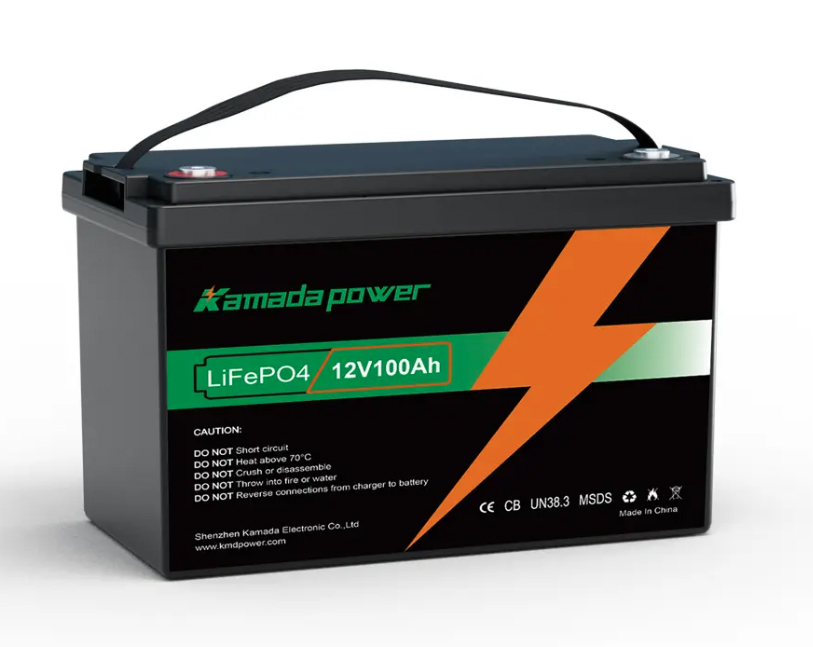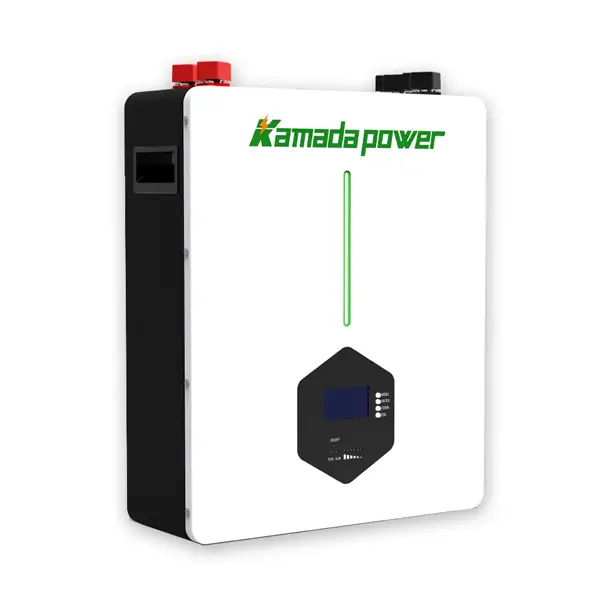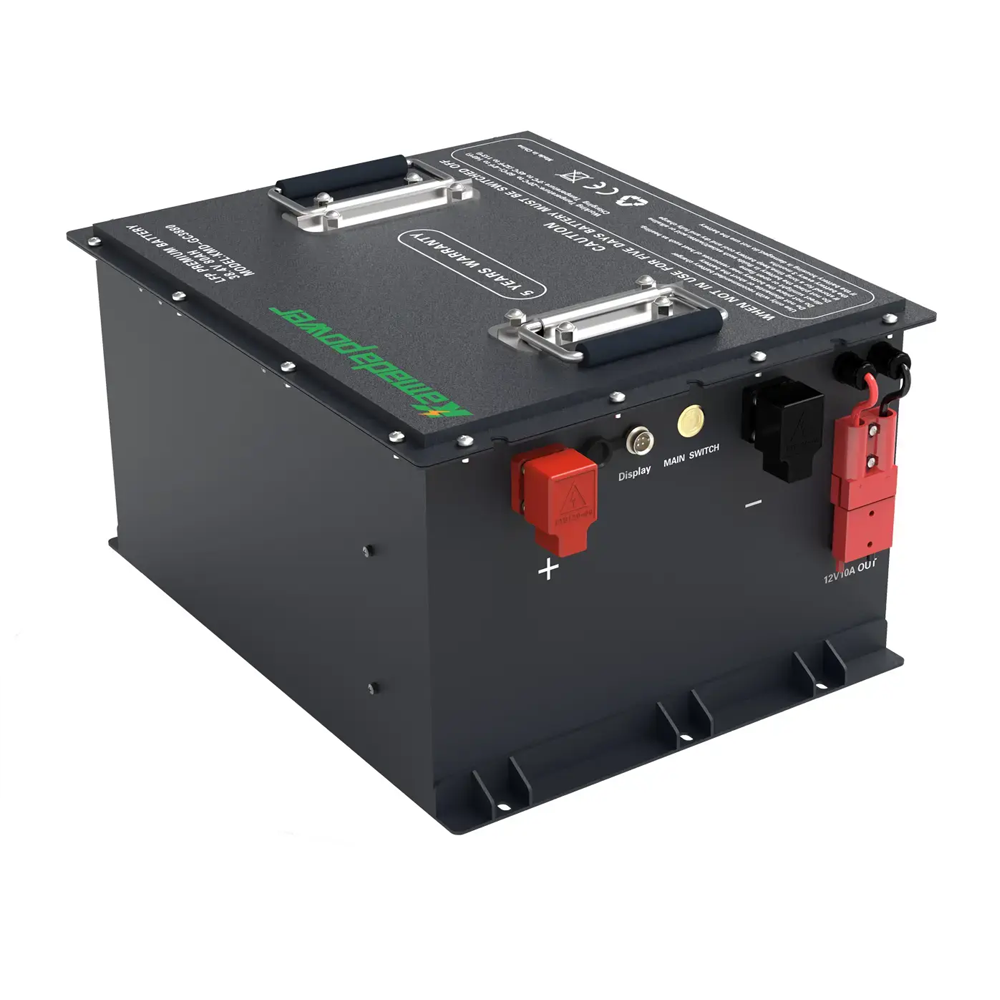Factos interessantes sobre as baterias de lítio. Se é engenheiro ou trabalha no sector das compras, está sempre rodeado de baterias de lítio. Elas alimentam os seus empilhadores, fazem a cópia de segurança dos seus centros de dados, são o ESS comercial que está a avaliar. Conhece as especificações - voltagem, amperes-hora, ciclo de vida. As folhas de especificações não nos dizem o que é importante.
Se nos afastarmos dos dados, é aí que se encontram os verdadeiros conhecimentos. Alguns factos que precisa de saber sobre a química que rege o mundo moderno.

Bateria Kamada Power 12v 100Ah Lifepo4

Bateria doméstica Kamada Power 10kWh Powerwall

Bateria de lítio para carrinho de golfe Kamada Power 48v 100Ah
A história das pilhas de lítio: Uma revolução recente
Parecem antigos. Mas não são. O ião de lítio é uma tecnologia nova. A ciência fundamental foi desenvolvida nos anos 70 por M. Stanley Whittingham. Os avanços críticos vieram mais tarde com John Goodenough e Akira Yoshino - trabalho que lhes valeu o Prémio Nobel de 2019.
Mas a bateria comercial da Sony, em 1991, foi o que realmente deu início ao fogo. O salto da tecnologia, de um conceito de laboratório para uma infraestrutura global, foi chocantemente rápido.
Como funcionam as pilhas de lítio
O princípio é simples. Os iões movem-se entre dois eléctrodos - um ânodo negativo e um cátodo positivo. A carga embala os iões no ânodo. A descarga envia-os de volta. Este movimento de iões no interior força os electrões a deslocarem-se para o exterior. É essa a corrente que utilizamos.
Porquê o lítio? Por duas razões. É o metal mais leve. Tem o potencial eletroquímico mais elevado. Esta combinação dá-lhe uma coisa: inigualável densidade energética. Mais potência, menos peso. A velha tecnologia de chumbo-ácido não consegue nem chegar perto. O material do cátodo define a personalidade da bateria. Escolhe-se LFP (Lithium Iron Phosphate) para equipamento industrial porque é preciso que seja seguro e que dure uma vida longa e dura.
Factos surpreendentes sobre as pilhas de lítio
- Não morrem na prateleira. Uma das principais caraterísticas do ião de lítio é uma taxa de auto-descarga quase nula. Talvez 1-2% por mês. Compare isso com a antiga tecnologia NiCd, que pode perder mais de 20%. É por isso que uma ferramenta que guardou durante meses ainda funciona.
- "Lítio" significa muitas coisas diferentes. A bateria do seu telemóvel? Provavelmente um polímero de iões de lítio (LiPo) fino e flexível. Um veículo elétrico? Provavelmente com Níquel Manganês Cobalto (NMC) para uma autonomia máxima. Mas uma bateria para empilhadores, um produto de alto desempenho carrinho de golfe, ou um RV banco de potência - esse será o LFP (fosfato de ferro de lítio). Nessas aplicações, o que importa é a durabilidade, a segurança e o custo a longo prazo.
Vida útil da pilha de lítio e duração do ciclo
Mas têm uma vida útil limitada. O tempo de vida de uma pilha ciclo de vida- o número de ciclos de carga/descarga que pode suportar antes de perder capacidade - depende totalmente da sua química:
- LFP (fosfato de ferro-lítio): 4.000 - 8.000+ ciclos. O vencedor claro para hardware industrial e casos de utilização intensiva como Autocaravanas e energia solar fora da rede.
- NMC (Níquel Manganês Cobalto): 1.000 - 3.000 ciclos. A solução ideal para muitos veículos eléctricos.
- LCO (óxido de lítio-cobalto): 500 - 1.000 ciclos. Suficientemente bom para aparelhos de consumo que, de qualquer modo, não existirão daqui a 3 anos.
E os nossos dados de campo são claros numa coisa: o calor é o assassino #1 destas baterias. As temperaturas elevadas destroem permanentemente a capacidade. Não há como voltar atrás.
Factos de segurança que deve saber
Já viu os títulos sobre incêndios. A realidade é a seguinte: uma bateria de lítio corretamente concebida é incrivelmente segura. Tem camadas de proteção. O modo de falha com que se deve preocupar é fuga térmica. Uma reação em cadeia. Uma célula sobreaquece e cozinha a célula ao lado, que cozinha a seguinte.
O BMS - Sistema de Gestão da Bateria - é o que impede isto. É um computador dedicado que monitoriza a tensão, a temperatura e a corrente de cada célula. Se detetar uma falha, corta a energia. Instantaneamente. É o dispositivo de segurança mais importante em qualquer bateria de iões de sódio ou sistema de lítio.
Factos sobre o ambiente e a reciclagem
O impacto da extração mineira é um problema real. A resposta da indústria é um investimento maciço na reciclagem. Novos métodos hidrometalúrgicos podem recuperar mais de 95% de metais valiosos - lítio, cobalto, níquel.
É uma melhoria enorme. Este é o início de uma verdadeira "economia circular", em que as baterias antigas de veículos eléctricos são apenas a matéria-prima para novas baterias.
Aplicações fantásticas que não conhecia
Esta tecnologia vai muito além do seu telemóvel.
- Exploração espacial: Os rovers da NASA em Marte e a ISS funcionam com baterias de iões de lítio fortemente modificadas. Têm de sobreviver ao vácuo e a oscilações brutais de temperatura.
- Aplicações marinhas: Na água, o fracasso não é uma opção. É utilizado para tudo, desde energia submarina silenciosa a energia de reserva marítima em navios comerciais.
- Dispositivos médicos: Pacemakers. Desfibrilhadores. Estes utilizam baterias especiais de lítio não recarregáveis, concebidas para serem perfeitas durante uma década ou mais.
- Energia pessoal e mobilidade: A mesma tecnologia LFP resistente do chão de fábrica está agora no nosso equipamento pessoal. Topo de gama carrinhos de golfe. Moderno Autocaravanas a funcionar tudo fora da rede. Sem gerador.
Curiosidades divertidas e menos conhecidas
- O termo "ião de lítio" é um pouco enganador. Não existe lítio metálico na maioria das células. Existe apenas sob a forma de iões.
- A bateria de um único Tesla Model S tem o equivalente em lítio a cerca de 10 000 iPhones.
Dicas para tirar o máximo partido da sua pilha de lítio
- Deixar de o pôr a zero. Isso provoca tensão na química. Os ciclos parciais são melhores.
- Guarde-o meio cheio. Para armazenamento a longo prazo, o objetivo é uma carga de 40-70%. Não 100%.
- Manter a calma. Um carro quente é a forma mais rápida de degradar uma bateria. A luz solar direta é igualmente má.
Conclusão
Então, qual é a conclusão? Uma bateria de lítio não é apenas um número de peça. É uma peça de química complexa. Saber como funciona - e como falha - leva a melhores decisões. Melhores aquisições, melhores operações. Respeite a química, e o ativo funcionará.
Está pronto para explorar a forma como a seleção da química correta da bateria de lítio pode otimizar as suas operações? Contactar-nos para uma solução de bateria personalizada.
FAQ
Quanto tempo duram as pilhas de lítio?
Pensar em ciclos, não em anos. O que importa é a química. Uma indústria Bateria LFP dá-lhe mais de 4.000 ciclos, durando facilmente mais de 10 anos. A bateria de um telemóvel barato pode durar apenas 500 ciclos.
Posso sobrecarregar uma pilha de lítio?
Não. Um sistema de gestão da bateria (BMS) funcional não deixará que isso aconteça. O seu objetivo é evitar que isso aconteça. Um BMS não é opcional.
Todas as pilhas de lítio são seguras?
De um fabricante conceituado? E utilizados dentro das especificações? Sim, são muito seguras. A segurança depende da qualidade das pilhas e do BMS. As falhas têm a ver com duas coisas: baterias baratas e não reguladas ou abuso físico.
E se eu precisar de uma bateria para um armazém que fica muito frio no inverno?
Este é um problema clássico de engenharia. Os iões de lítio normais não funcionam bem no frio. Há dois caminhos para desempenho em temperaturas extremas. Primeiro caminho: uma bateria LFP com aquecedores incorporados. Caminho dois: olhar para novas tecnologias como baterias de iões de sódio. O frio é muito mais fácil de suportar intrinsecamente.